The U.S. Navy has unveiled the AIM-174B, an air-launched variant of the versatile SM-6 missile, at the Rim of the Pacific (RIMPAC) exercise.
The AIM-174B, previously shrouded in mystery, has been spotted on U.S. Navy F/A-18E/F Super Hornet fighters during RIMPAC, the world’s largest international maritime exercise.
This missile is designed as a very long-range air-to-air missile, capable of engaging high-priority ground targets, such as air defence sites and warships, functioning in a quasi-ballistic manner.
Photographs from Joint Base Pearl Harbor-Hickam, Hawaii, show an F/A-18E from Strike Fighter Squadron 192 (VFA-192), the “Golden Dragons,” equipped with a pair of AIM-174B missiles in training-round form. The unit is currently deployed as part of Carrier Air Wing 2 (CVW-2) aboard the aircraft carrier USS Carl Vinson (CVN-70). Another Super Hornet from VFA-2 “Bounty Hunters,” also attached to CVW-2, was seen carrying a pair of these missiles, modified for special tests.
The AIM-174B benefits from the altitude and speed of the launching aircraft, providing a significant range advantage over the surface-launched SM-6, which has a range of approximately 230 miles. The air-launched version is expected to exceed this, potentially reaching hundreds of miles in air-to-air engagements.
The AIM-174B retains the surface strike capability of the SM-6, making it useful for targeting large maritime vessels, such as the decommissioned USS Tarawa, likely to be sunk off the coast of Hawaii during the exercise.
The combination of the Super Hornet and AIM-174B missile was first seen three years ago, but it has never been officially acknowledged by the Navy. Recent sightings of the missile on operational fleet aircraft indicate that this capability is maturing.
The surface-launched SM-6 was originally designed to counter long-range aerial threats and ballistic missiles in their terminal stages of flight. It also has capabilities against hypersonic weapons. The AIM-174B’s potential to target high-value ground and sea assets adds substantial value, positioning it in the quasi-ballistic missile category, which is increasingly relevant in air-launched weaponry.
The SM-6 is networked, capable of receiving targeting data from various platforms, including the F-35 stealth fighter, E-2D Advanced Hawkeye, and Aegis-equipped warships. This networked approach allows the Super Hornet to engage targets beyond its radar range, enhancing its combat capabilities significantly.
The AIM-174B provides the Super Hornet with the ability to engage various aerial threats at distances far beyond the current AIM-120 AMRAAM and likely beyond the still-in-development AIM-260 JATM. This capability is crucial for maintaining air superiority in contested environments, particularly against China’s long-range air-to-air missiles.
Against ground or maritime targets, the AIM-174B offers the Super Hornet a means of striking over considerable distances with a weapon that is difficult to intercept. It’s high speed and manoeuvrability make it effective against fortified targets.
While the AIM-174B could be used as a training surrogate to emulate adversary capabilities, its designation and the secrecy surrounding the programme suggest it is an operational weapon. These capabilities are highly relevant to potential future conflicts in the Pacific, expected to be dominated by long-range ‘kill chains.’


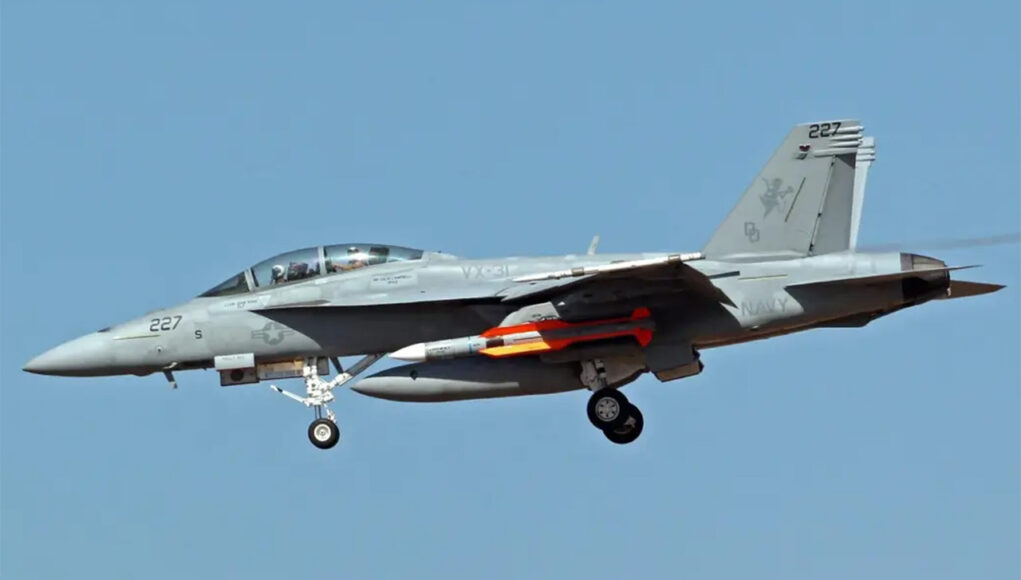
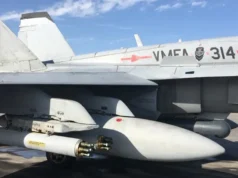

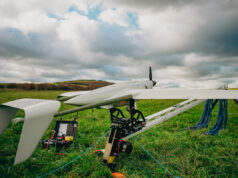
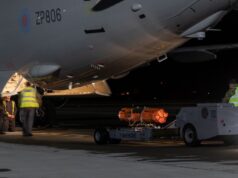
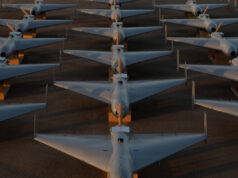
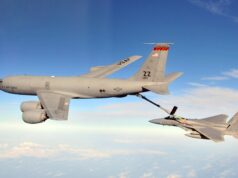
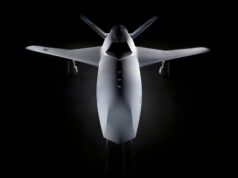

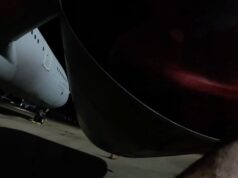
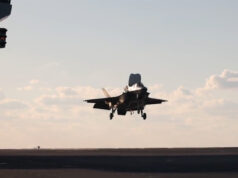

And here I thought it was just the MOD that Heath Robinson worked for.
This shows the length American defence contractors will go to to stop the Pentagon buying Meteor 😀
I’d bet good money Meteor won’t be integrated onto F35 until after a Made in America equivalent is integrated
I would imagine it will all happen about the same time once the software is finished.
I don’t see any willingness to piss off customers by LM, it’s just incompetence on their part.
Mostly I think far too much expected from what is now a very dated conceptual approach (90s in reality) to software/hardware platform design and subsequent learning on the job. It sniffs of Horizon tbh when you are committed to re appraising and developing what you have rather than starting again with fresh more advanced eyes and understanding. We are promised with Gen 5.5 or 6 projects it will be very different due to modular approaches and the ‘sandboxed’ separation of weapon and aircraft flight systems/sensors which is the major block to introducing new weapons it seems as the latter needs to be thoroughly re-tested each time there are substantial changes to the former. Of course promises are cheap and persistent so time will tell, though with the rise of ai involvement in software development and maturing of the whole advanced developmental environment there is hope it will be less troublesome in newer projects.
AIM-260 is more than likely already in service. I don’t think they plan to export it so they aren’t worried about meteor competing with it. SM-6 air launch has been operational for years, they didn’t admit it until now. I don’t think meteor ever interested them as it doesn’t offer near the performance leap over the AIM-120D3 as the aim-260 does.
That will be the AIM-260 which will out range the Meteor so let’s see if it gets on F-35 before Meteor and no doubt restrict its sales on F-35.
As for the AIM-174B it seems like an awesome missile which if as good as advertised starts to ask questions over our future plans with various missiles being preferred to do what it seems to do (at first glance at least) in one missile. As if the SM-6 didn’t seem to be a great all round missile in the first place. Will be interested to see if the specs when able to compare them confirm this all in one variations on a theme matches or indeed out matches the specialist alternatives. .
The best way to think of SM-6 (AIM-174) is to think of it as the bigger brother of the AMRAAM. The airframe is much wider and longer, but it uses the same radar and guidance system. Although the radar antenna has a wider diameter over the one fitted to AMRAAM due to the additional space available. The other benefit over AMRAAM is that SM-6 has an integrated inertial nav and GPS system. Thereby allowing to be used against ground targets.
I know there has been an ask by the MoD to exploit the current legacy missiles, used by the RAF, FAA and AAC. Which is mostly to try to drive down the costs. But also to give a platform a more flexible use of its fitted weapons.
As an educated guess, I would say watch this space. As the next 5 to 10 years, you will probably see Meteor, ASRAAM, Brimstone and perhaps Storm Shadow expand their target envelope.
I think the long delay in meteor integration is a combination of a lack of funding by the mod and the long delays in the block 4 software which is screwing everyone over including the US. With regards to this new missile, I think this addresses a different target set from the meteor. This is aimed squarely at the enablers such as awacs, tankers and most importantly air launched ballistic missile carrying aircraft such as the Russian Tu-22 and the Chinese H-6. If this weapon is being guided by an offboard radar like that of the f-35, pilots of these large aircraft might only get a few seconds warning before being shredded by this thing.
Could we not produce a missile with similar parameters using Meteor?
Images for AIM-260 seem to use a very large and powerful first stage booster propelling a maneuverable second stage to near-hypersonic speeds.
Meteor is not large for a missile of that class, being only 3.6m long (AIM-174 is 6m long)
Surely it would not be difficult to add a 1- or 1.5m long extra booster to the back of Meteor. This would accelerate it to well over Mach 4, and perhaps even more, so that the ramjet can maintain that speed all of the way to the target 200 miles away without the acceleration period that eats up Meteor’s fuel.
This ‘Meteor-ER’ would never be able to fit inside F35, but it would let us use Typhoon in the same way the US will use F18 and F15, by firing long ranged missiles based on datalink from a forwards F35.
Yes, to a point. Similarly using the Aster in a similar way, would not gain a significant benefit over Meteor. As they are both a similar size dimensionally. If anything the standard Meteor will still have the range and time to target advantage due to its ramjet engine. Even if Aster’s motor was changed to a dual pulse one.
There are two variants of SM6, the Block 1A and the Block 1B. The Block 1A has a body diameter of 13.5” (34cm), whilst the much newer Block 1B is 21” (53cm) in diameter, compared to Meteor’s 7” (17.8cm). Therefore it can carry a huge amount of fuel compared to Meteor.
Looking at the missile hanging off the pylon under the wing of a F-18. I would say it looks like the smaller of the two. Though it’s hard to tell as there’s no references to compare it to, such as an AMRAAM on another pylon.
Regardless. The AIM-174 will have an advantage over the surface launched version, even though it doesn’t use the 1st stage rocket booster. As the F18 will likely be cruising above 30,000ft. Plus it’s likely to launch the weapon after accelerating past Mach 1. Which means the missile won’t have to power itself through the transonic zone, which uses up a huge amount of fuel.
For very long range engagements, where the target is likely over 200 miles away. The missile will climb to above 100,000ft in a parabolic arc. Where the air is much thinner, therefore the drag will be significantly less. Allowing the missile to glide much further. The SM-6 design with its mid-body strakes is a draggy design. So its glide ratio is not that great, still better than Meteor’s though.
For very long range engagements, the missile will require lots more mid course navigation updates to intercept the target and its predicted location. In this sense it not really a fire and forget missile. Due to the distance of the target and the amount of distance the target could travel after the missile has been released. Therefore it will be essential for a 3rd party to give it updates. The F18’s radar as good as it is, does not have the range for this kind of engagement. Therefore it will need updates from an AEW, F35 or suitable warship.
Meteor could compete with the AIM-174 by fitting an additional external 1st stage rocket motor. The missile does already have a 1st stage contained within the ramjet’s combustor and exhaust. However it’s not very big and is just big enough to accelerate it to over Mach 1 when launched subsonically, to allow the ramjet to operate. By fitting a much bigger booster. The missile can be accelerated to a much higher speed. So it then uses its ramjet fuel primarily for cruising and not accelerating. You could tailor the booster to allow the missile to reach at least 150 miles. However, the booster will need to be pretty large. Therefore it won’t be able to fit in a F35’s weapon’s bay.
To reach 200+ miles though, the Meteor will need to grow much bigger, so it can hold more fuel. The ramjet is still a very good option, as it means you can either make the missile smaller than SM6 as it doesn’t need to carry any oxidizer. Or you make it the same size, but then have a range potential where it can teach over 250 miles.
The US Navy has the advantage of the E2D Hawkeye, that has a detection range of around 372 miles (600km). Which can be used to give mid course updates for very long range engagements. Plus it can use the F35C to get close to a target and give updates. Being a SM-6 variant the AIM-174 can still be used against ballistic threats guided by an AEGIS warship.
For us we would need something considerably better than Crowsnest for a CSG. Though the Wedgetail does have that capability. As well as the F35B, woukd give us a comparable capability.
Ah yes, American defense contractors number one priority is stopping the sale of Meteor to the Pentagon. And preventing MREs from including Marmite instead of Tabasco.
There is no evil they are unwilling to inflict on the world in pursuit of profit 😀
I think the German’s also want to integrate the Meteor onto their newly ordered F35-A’s. Surely amongst allies too, can’t they get this issue sorted pronto?
Intresting idea. I suppose that in the air to air role the AIM-174 would be used to take out AEW aircraft, tanker aircraft and incoming bombers. In the anti missile role, in theory it could work but how many AIM-174s can a F-18 carry if its two then would it make sense. The RIM-174 in its naval version is a heavy missile so I cannot see the possibility of a F18 carrying more than four AIM-174s which again indicates to me that it will not be used in the anti missile role but in the role of taking out the enablers such as AEW.
the RIM-174 doubles as an anti-ship/anti-ground missile as well.
Interesting and logical option for the RAAF’s Super Hornets that could greatly increase that platform’s strategic utility.
RAAF Super Hornets are already being used as test beds on Australian weapons ranges for the USAF’s Hypersonic Attack Cruise Missile (HACM) and could also play a role in AIM 174 testing and development.
The RAAF already uses the SHs in a maritime strike role (air launched Harpoons) but the AIM 174 would provide a long range supersonic anti ship option above and beyond the planned RAAF Naval Strike Missile (NSM) and LRASM acquisition both of which are subsonic.
Given the RAN is planning to acquires SM6 an FMS buy of AIM 174 for the RAAF should not present any barriers.
HACM, AIM 174, LRASM and NSM would make the RAAFs SHs a seriously potent platform able to hold and target Chinese aircraft and carrier groups at range.
One of the F-18 sighted with the missile was carrying two AIM-74s on the inboard pylons and two AIM-120s on the outer. The SM-6 weighs about 1.5 tons, I’m not sure if that includes the booster which is removed on the air launched version so it’s possibly lighter. I’d imagine for carrier launching they’ll carry no more than 2 but they could in theory carry up to 5.
A typical strike package (Chinese or Western alliance) tends to have no more than one AWACS and one or two tankers.
A single SH with four ultra long range missiles is likely able to cripple any CAP or strike packages effectiveness by taking out all its high value enablers.
Suddenly helicopter AEW don’t seem so bad 😀
It could probably take the AEW aircraft out on the tarmac at that range 😀
The air launched Sm-6 missile is not going to out range the ship launched munitions as it doesn’t have the booster. The booster will impart far more energy than a fighter plane can.
Even the relatively dinky booster on the back of a Sea Dart accelerated that missile up to Mach 2.5! The booster on the SM-6 will put more than 1500m/s of delta V into the missile so even accounting for drag and altitude it’s probably doing more than Mach 4 at booster separation and about Mach 6 at the end of second stage.
Looking at the physics of this missile it might not actually outrange the AIM-120-D by that much. The two missiles have about the same proportion of their masses devoted to their warhead, they will have similarly energetic propellant. Their control surfaces and actuators will scale with mass. The AIM-174B uses a variant of the same seeker as the AIM-120 but scaled up for the larger diameter. So in terms of propellant to mass the AIM-174B is likely pretty similar to the AIM-120.
Assuming that the AIM-174B doesn’t want to dog fight you could choose to have a more efficient motor pulse than a motor that needs to get the missile up to speed quickly. The larger missile also benefits from the square cube law in terms of parasitic drag.
Put that all together and you are likely looking at a 50% boost Vs the AIM-120D rather than a range multiples larger. Hence why it’s likely that the plane is being used as a convenient way to move the missile around for tests and/or it’s a useful platform for deploying the missile against ground and sea targets.
Vs the Meteor the range is a very different concept. The point of the Meteor is that whatever the range you end up meeting a missile under power at Mach 4. Once the missile runs out of fuel it will be pretty draggy and slow down rapidly hence the Meteor’s powered range and the ballistic range of an AIM-120D might be pretty similar but the effective range of Meteor Vs an alert fighter aircraft will be considerably greater.
If you want to hit AWACs and similar you want a 2 stage missile with an AIM-120 sized warhead.